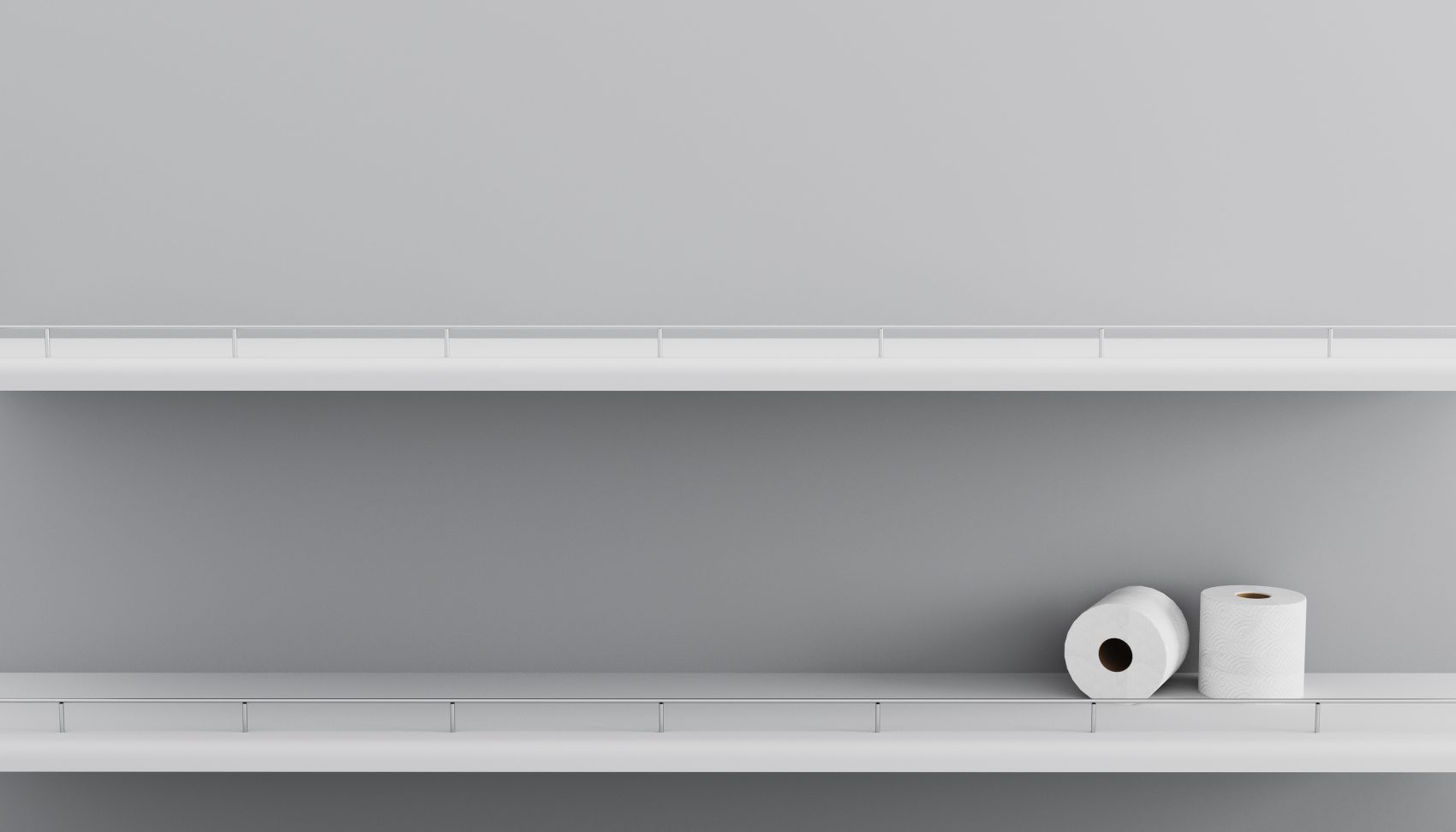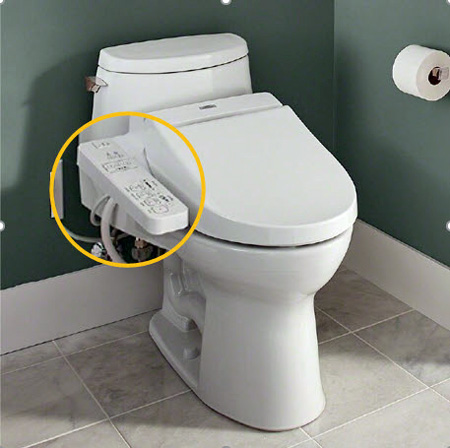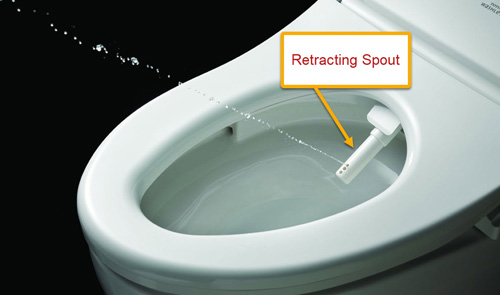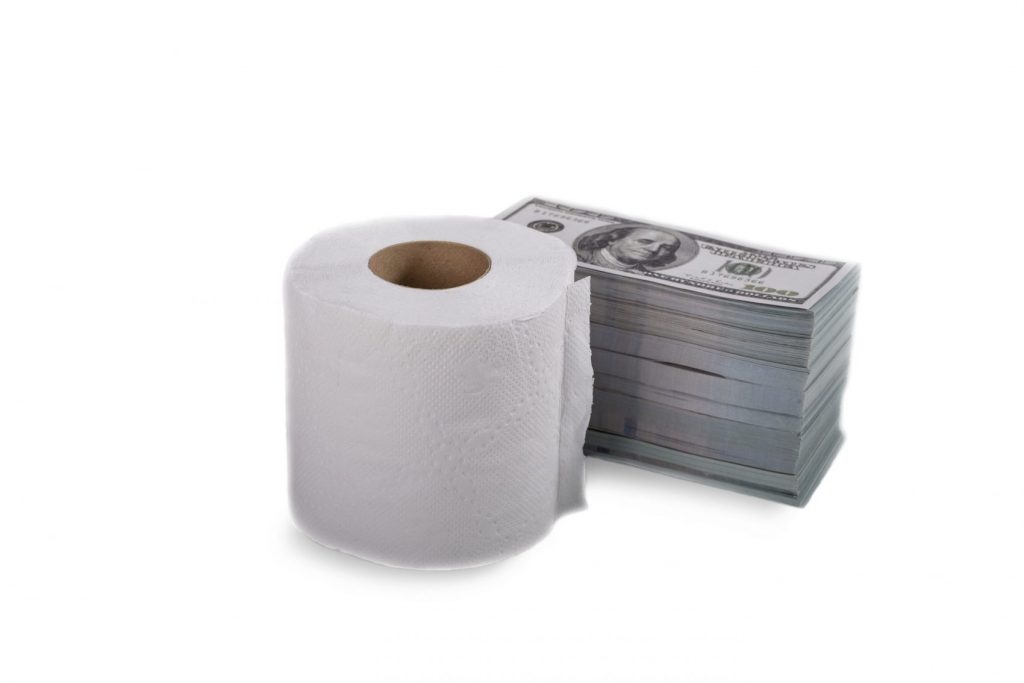 Chances are that until the COVID-19 pandemic, you never considered how a toilet that washes you could make your life simpler. It’s probably also true you’ve never made so many trips to the store only to find toilet paper supplies wiped out.
Chances are that until the COVID-19 pandemic, you never considered how a toilet that washes you could make your life simpler. It’s probably also true you’ve never made so many trips to the store only to find toilet paper supplies wiped out.
The COVID-19 coronavirus, classified as a world pandemic by the World Health Organization, has caused many changes. The rapid spread of the virus, and the sudden scarcity of basic necessities, has altered the way we think about a lot of things. Who thought this would be one of them?
Toilet paper got so much attention because it disappeared from store shelves with the speed of light, and because, well, everybody needs TP, right?
But toilet paper probably isn’t as necessary as may you think it is – less than one-third of the people on earth use it. That’s because toilets that wash you with water, also known as bidet toilets, make it unnecessary.
Even before The Great Toilet Paper Panic of 2020, these toilets were gaining popularity in the US. The reasoning is simple: a toilet that washes you with water is more effective at cleaning, better for the environment, can reduce plumbing problems and will save you money.
A Toilet that Washes You? Really?
 As popular as bidet toilets are around the world, it’s not surprising that most Americans have never used one.
As popular as bidet toilets are around the world, it’s not surprising that most Americans have never used one.
Many Americans, along with our neighbors in Canada and Mexico, are not even familiar with the concept. We’re like the hero in the 1980s movie Crocodile Dundee discovering a bidet on his first trip to the big city.
Americans use the most toilet paper in the world per person, wiping out about 34 million rolls per day. Given that, it’s a little shocking to discover that about 70 percent of the world doesn’t use toilet paper.
A portion of that 70 percent, especially in parts of Europe and Asia, relies on a toilet that washes you. There are multiple types, and in many cases it’s more accurate to say
it’s a toilet seat that washes you, but they basically function like this:
- After you finish using the toilet, you press a button and a small stream of water sprays your rear.
- The water cleans more completely than toilet paper, and an air dryer finishes the job.
The toilet seat that washes and dries dramatically reduces the amount of toilet paper used. Some people finish by blotting with toilet paper, but many people don’t use any at all.
Do Bidet Toilets Fit in a Typical Bathroom?
Bidets come in many styles and price ranges, and almost all of them will fit in a typical bathroom. Some are one-piece bidet toilets in which the spraying and drying mechanisms are part of the bowl assembly of the toilet. Other bidets are part of the toilet seat and can be installed on existing toilets. They go by names such as bidet toilet seats and toilet seat washers.
As with just about everything, there are models that range from economy to luxury. Basic features include heated seat, front/rear spray wash, air dryer and spray pressure and temperature controls. Other bidet toilet features include adjustable nozzle positions, deodorizer and programmable functions.
Whatever you want to call the bidet — a toilet that washes you with water, a toilet that washes and dries you, a toilet seat washer, etc. – it is best installed professionally by a licensed plumber.
Benefits of a Toilet that Washes and Dries You
One of the benefits of toilets that wash you became obvious when toilet paper disappeared from store shelves. But less reliance on toilet paper is only one of the advantages.
Improved Personal Hygiene
 This might be the hardest sell for those who have never used a bidet toilet. The thought of having a stream of water sprayed in your nether regions might seem unsanitary, but it’s just the opposite: water is a better cleaning agent than tissue.
This might be the hardest sell for those who have never used a bidet toilet. The thought of having a stream of water sprayed in your nether regions might seem unsanitary, but it’s just the opposite: water is a better cleaning agent than tissue.
Without getting into too much detail, studies have shown that washing with water removes more fecal bacteria than using toilet tissue and can contribute to better health in that area.
Better for the Environment
Estimates vary regarding how much toilet paper the average American uses in a year, but there’s no debate that Americans are the world leader in TP use. That use adds up to a somewhat alarming statistic, provided by ToiletPaperHistory.com, that it takes about 384 trees to make the toilet paper that one man uses in his lifetime.
Toilet paper is rarely created with any recyclable content, so there are questions about whether the production of toilet paper is sustainable longterm. A report by the Natural Resources Defense Council pointed the finger at the largest toilet tissue companies for destroying North American forests and contributing to climate change.
In addition to the trees that must be cut down for the paper, there is the environmental impact of the manufacturing process (12-37 gallons of water required to make a single roll) and the transportation needed to deliver bulky toilet paper packages to store shelves.
Saves Money
 When toilet paper is readily available, it doesn’t seem expensive. But with a traditional toilet, TP is a necessity that needs to be replenished frequently. Even for a family that uses a modest amount of toilet paper, $5 per week adds up to $260 per year that gets flushed down the toilet.
When toilet paper is readily available, it doesn’t seem expensive. But with a traditional toilet, TP is a necessity that needs to be replenished frequently. Even for a family that uses a modest amount of toilet paper, $5 per week adds up to $260 per year that gets flushed down the toilet.
As we all discovered, the price of that toilet paper can rise considerably when the market is depleted. (And then there’s the emotional cost, when you can’t find any toilet paper). With the addition of a bidet toilet, the need for much of that toilet paper is eliminated.
Fewer Plumbing System Problems
Reducing the amount of toilet paper is good for the environment and your wallet, and it can also be good for your plumbing system. Using too much toilet paper can lead to a clog, especially in low-flow toilets, that requires getting out the plunger – or calling for help.
And speaking of clogs, pre-moistened toilet paper and “flushable wipes” have been marketed more to Americans in recent years. Those products are a head nod to the fact that water is a better cleaner than a dry wipe, but unfortunately, the pre-moistened toilet paper is more expensive than typical TP. It can be even more expensive when it clogs a toilet, because there’s evidence that some moistened wipes that claim to be flushable are not.
Frequently Asked Questions About Bidet Toilets
As mentioned, the concept of a toilet that washes you is still somewhat foreign to many Americans. Answers to some other questions:
What about the water used for a bidet toilet?
Bidet toilets are better for the environment because they reduce the destruction of forests, but what about the extra water they use? Well, using a bidet generally consumes about one pint of tap water – an order of magnitude less than the water to make a single roll of toilet paper.
Will I still need to use toilet paper?
Bidet toilets are equipped with warm air dryers, so for some people, there is no need for any toilet paper. Others prefer to use a couple squares of toilet paper to complete the drying. Either way, the amount of toilet paper used is reduced dramatically from the traditional use of TP.
Is a toilet that washes you difficult to clean?
A bidet toilet is no more difficult to clean than a typical toilet, whether it’s a toilet seat bidet or a one-piece bidet model. They are built with hygiene and ease of cleaning in mind.
Are there specific people that might benefit most from use of a bidet toilet?
While bidet toilets are something for everyone to consider, they can be especially helpful for those with physical disabilities or difficulty with traditional wiping. They are frequently lauded by caregivers who must tend to a patient’s personal needs.
Conclusion
Many people say the COVID-19 Coronavirus outbreak will lead to some cultural shifts in America in the way we see things. The toilet paper shortage — did anyone ever think that “TP crisis” would be trending on Twitter? – might be the thing that makes the bidet toilet a common sight in America.
It makes sense that it would, because even before the great hunt for toilet paper began, a bidet toilet was worth considering. A toilet that washes you can lead to improved cleaning and hygiene, saves trees and is better for the
environment, can reduce plumbing problems and save you money.
Bidet toilets come in a variety of styles and will fit with the design and flow of any bathroom. Additionally, a licensed plumber can provide professional installation for a bidet toilet, setting you up for years of benefits with your new product.
Are you ready to stop the paper chase?
